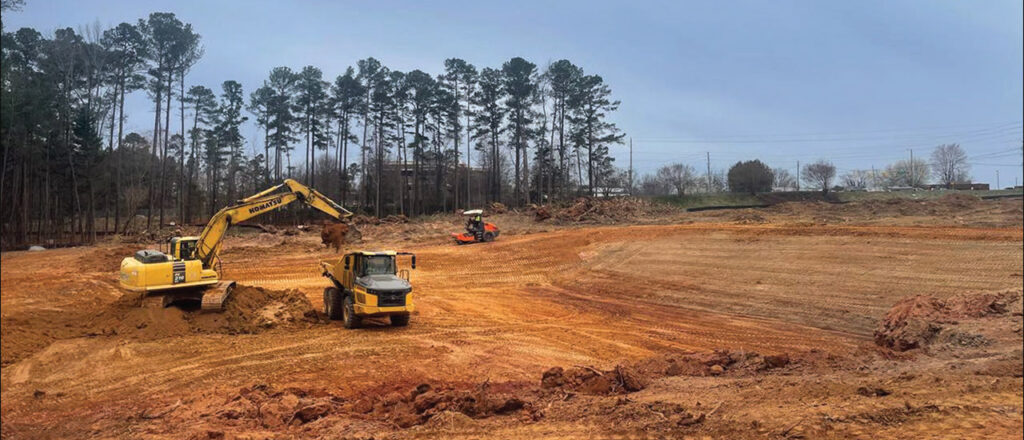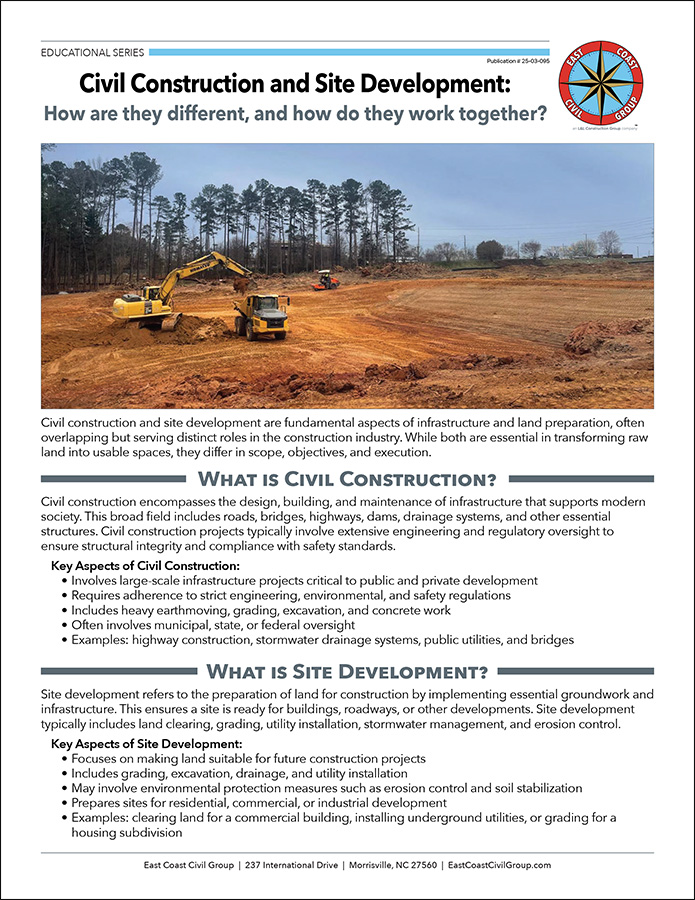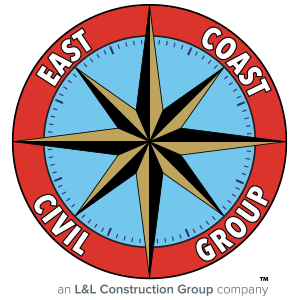
Civil construction and site development are fundamental aspects of infrastructure and land preparation, often overlapping but serving distinct roles in the construction industry. While both are essential in transforming raw land into usable spaces, they differ in scope, objectives, and execution.
— What is Civil Construction? —
Civil construction encompasses the design, building, and maintenance of infrastructure that supports modern society. This broad field includes roads, bridges, highways, dams, drainage systems, and other essential structures. Civil construction projects typically involve extensive engineering and regulatory oversight to ensure structural integrity and compliance with safety standards.
Key Aspects of Civil Construction:
- Involves large-scale infrastructure projects critical to public and private development
- Requires adherence to strict engineering, environmental, and safety regulations
- Includes heavy earthmoving, grading, excavation, and concrete work
- Often involves municipal, state, or federal oversight
- Examples: highway construction, stormwater drainage systems, public utilities, and bridges

— What is Site Development? —
Site development refers to the preparation of land for construction by implementing essential groundwork and infrastructure. This ensures a site is ready for buildings, roadways, or other developments. Site development typically includes land clearing, grading, utility installation, stormwater management, and erosion control.
Key Aspects of Site Development:
- Focuses on making land suitable for future construction projects
- Includes grading, excavation, drainage, and utility installation
- May involve environmental protection measures such as erosion control and soil stabilization
- Prepares sites for residential, commercial, or industrial development
- Examples: clearing land for a commercial building, installing underground utilities, or grading for a housing subdivision
— Key Differences: —
| Feature | Civil Construction | Site Development |
| Scope: | Large-scale infrastructure projects | Land preparation for construction |
| Objective: | Create long-lasting infrastructure (roads, bridges, utilities) | Make land suitable for building and development |
| Regulation: | Governed by engineering codes and government oversight | Focuses on local zoning, environmental regulations, readiness |
| Processes: | Heavy excavation, paving, structural work | Land clearing, grading, stormwater management, utility connections |
| Examples: | Roads, bridges, drainage systems | Preparing land for a commercial building or subdivision |
The Relationship Between Civil Construction
and Site Development
While distinct, civil construction and site development often work together. A site must first undergo development to establish a stable foundation before civil construction projects, such as roads or systems, can begin. Developers frequently coordinate both processes to ensure seamless project and regulatory compliance.
— Conclusion —
Understanding the differences between civil construction and site development is crucial for project planning and execution. While site development focuses on preparing land for construction, civil construction builds the infrastructure that supports these developments. By recognizing their unique roles, project stakeholders can ensure efficient, compliant, and successful construction projects.
East Coast Civil Group has extensive experience in both civil construction and site development. The company provides a range of services, including excavation, grading, underground utility installation, stormwater management, road construction, and erosion control. Their work supports projects in urban, suburban, and even rural settings, ensuring compliance with environmental and regulatory requirements. Whether preparing raw land for development, installing critical drainage systems, or constructing roads and retaining walls, East Coast Civil Group delivers solutions that support the long-term success of construction projects.
